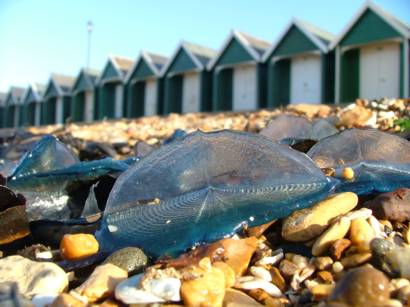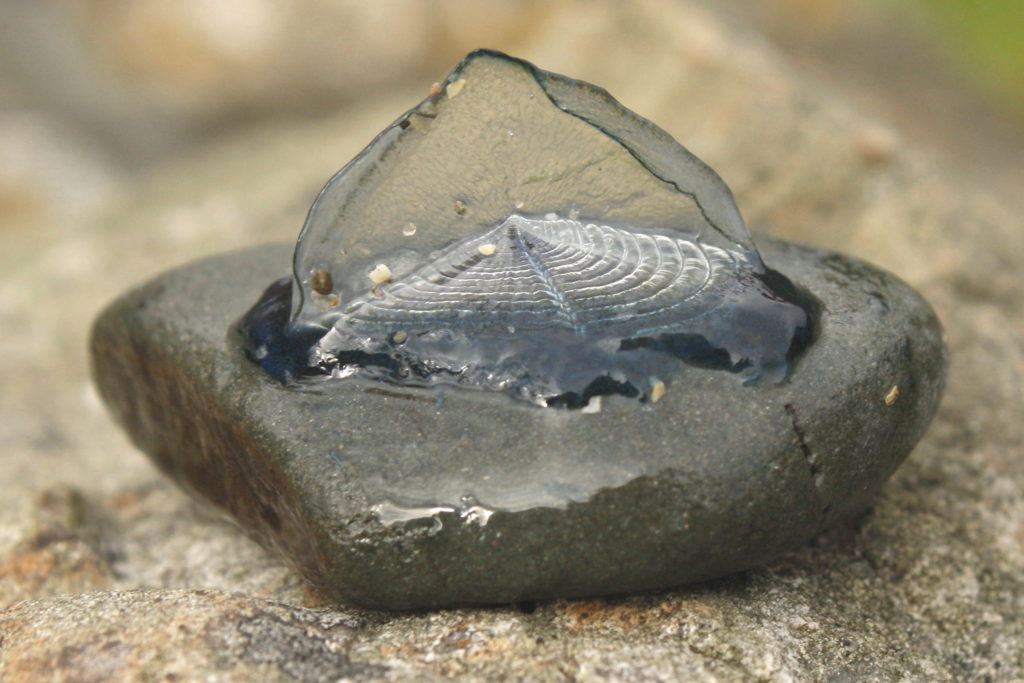By-the-wind sailors make landfall
- Complaining about the Mainland - 17th August, 2024
- New island designation – is it just greenwash? - 26th April, 2024
- Police and Crime Commissioners – a solution or a problem? - 21st April, 2024
A bit of a stir at work today, when reports started coming in of strange creatures washed up on beaches on the northern coast of the Isle of Wight. One of The Ranger’s colleagues (in fact, a real ranger, not a virtual one) set off to investigate, and brought back these fascinating images of Velella velella, the by-the-wind sailor.

What strange, lovely little things. In the west millions of these little corpses have washed up. We seem to have got quite a few thousand, but still an impressive crop. MarLIN describes Velella thus:
Velella velella is an ocean dwelling species that is occasionally seen in the open sea and washed up around British and Irish coasts. Velella velella is a pelagic colonial hydroid. The float, which is an oval disc, is deep blue in colour and can be up to 10 cm in length. Short tentacles hang down into the water from the float. A thin semicircular fin is set diagonally along the float acting as a sail. This sail gives the animal both its scientific (i.e. from velum, a sail) and its common name, ‘by-the-wind-sailor’. The direction of the sail along the float determines which way Velella velella will travel. If the sail runs north-west to south-east along the float it will drift left of the wind direction, if the sail runs south-west to north-east it will drift right of the wind direction. Velella velella feeds on pelagic organisms, including young fish, caught by stinging cells on its tentacles.
So it’s like a jellyfish, but is not one – it is actually a colony of closely associated but separate organisms. Weird! Luckily for us, they are pretty much harmless to humans, so The Ranger and his colleagues can reassure enquirers. In fact, a press release is being prepared to make the best of this interesting publicity opportunity. People do tend to worry about this sort of thing, and it’s an important part of all rangers’ jobs to ensure that they can give reliable ecological information to people. This makes them more comfortable and confident with wildlife. Usually there is no reason for alarm when some unusual wildlife is encountered, but instinct does sometimes seem to take over when a strange spider, snake, fish, fungus or slightly sniffly bird is discovered. It’s a good thing to have ecologists and rangers around to offer some authoritative advice.




Good material, and it made me google what this creature is, but why don’t you check your first link? Click it yourself.
Thanks, I will fix that!